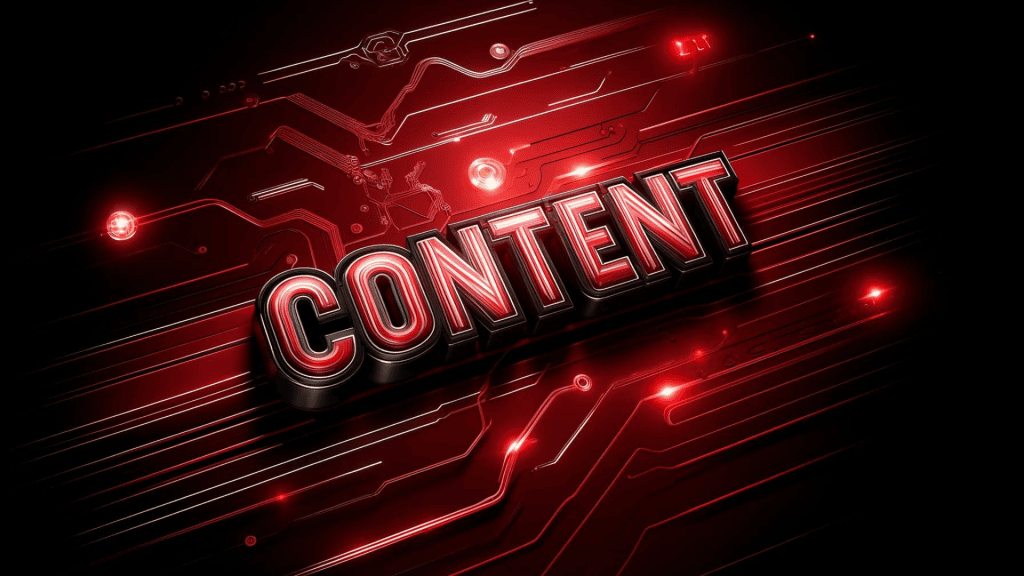Elevating CMS User Experience: Design Principles To Enhance Usability
Reading time: 7 minutes
Table of Contents
- 1. Understanding the Role of UX in CMS Solutions
- 2. Building Intuitive Navigation
- 2.1 Importance of Clear Navigation
- Image Suggestion: Add an image of a sitemap or a flowchart depicting user pathways within a CMS for easy navigation.
- 3. Embracing Responsive Design
- 3.1 Advantages of Mobile-Friendly CMS Solutions
- Image Suggestion: Insert an image of the same CMS layout displayed across different devices to showcase responsive design.
- 4. Accessibility as a Core Principle
- 4.1 Legal and Social Implications of Accessibility
- Image Suggestion: Feature an image displaying an accessibility-friendly CMS interface, like one with high contrast or a screen reader in use.
- 5. Optimizing CMS for Performance: Focus on Speed and Efficiency
- 5.1 Quick Load Times
- 5.2 Reducing Friction in User Workflows
- Image Suggestion: Place an image showing a CMS page loading quickly, with elements like a loading bar or icons demonstrating speed.
- 6. Enhancing User Engagement through Personalization
- 6.1 User-Centric Personalization Features
- 6.2 Benefits of Personalization in CMS Management
- 7. Incorporating Feedback Mechanisms for Continuous Improvement
- 7.1 Types of Feedback Mechanisms
- Final Thoughts
Creating a seamless Content Management System (CMS) user experience requires a strategic approach to design. In today’s digital landscape, where user satisfaction drives success, it’s essential to prioritize design principles that improve usability. Whether you’re developing a CMS from scratch or looking to enhance an existing system, focusing on user experience (UX) can elevate your platform, making it a valuable tool for administrators and users alike. Here’s a comprehensive guide on how to enhance your CMS’s usability and transform it into the best content management system for your organization.
1. Understanding the Role of UX in CMS Solutions
User experience (UX) is the backbone of any successful CMS. When we talk about UX, we’re referring to how users interact with and perceive the system. An intuitive and well-designed CMS enhances productivity, fosters user engagement, and minimizes frustration. CMS solutions, like HubSpot, prioritize UX, but broader strategies—such as applying proven SaaS user experience design tips—can elevate usability across any content management system. Ensuring your CMS delivers a satisfying user experience is key to long-term success.
Image Suggestion: Place an image illustrating an intuitive CMS interface, like a clean, organized dashboard with clear labels and icons.
2. Building Intuitive Navigation
2.1 Importance of Clear Navigation
An effective CMS begins with intuitive navigation. Users should be able to find what they need quickly and without confusion. This includes a logically structured menu, consistent layout across pages, and streamlined access to core functions. Clear navigation paths empower users, allowing them to focus on content creation and management rather than searching for features.
2.1.1 Organize Based on User Needs
Organizing content and tools according to user needs is essential. For example, if a CMS management system is primarily used for publishing, ensure that publishing tools are readily accessible. CMS solutions like HubSpot excel in organizing navigation so that high-usage tools are immediately accessible, which increases productivity and enhances user satisfaction.
Image Suggestion: Add an image of a sitemap or a flowchart depicting user pathways within a CMS for easy navigation.
3. Embracing Responsive Design
With users accessing CMS platforms from various devices, responsive design is a non-negotiable feature. Responsive design means that the CMS adapts to different screen sizes, providing a consistent user experience across desktops, tablets, and smartphones. For CMS solutions to truly meet user demands, the interface needs to remain functional and aesthetically pleasing on any device. HubSpot, as a leading platform, employs responsive design effectively, ensuring its CMS adapts to any screen size.
3.1 Advantages of Mobile-Friendly CMS Solutions
A mobile-friendly CMS is crucial for on-the-go management, especially for administrators who need access outside the traditional office setting. This flexibility enhances usability, allowing users to manage content whenever necessary, whether they’re in a meeting or on the move.
Image Suggestion: Insert an image of the same CMS layout displayed across different devices to showcase responsive design.
4. Accessibility as a Core Principle
Accessibility should be at the heart of any CMS design strategy. Designing for accessibility means considering the needs of all users, including those with disabilities. Compliance with accessibility standards broadens your audience, supports inclusivity, and often fulfills legal obligations. Considerations like text-to-speech options, alt text for images, and high-contrast modes make the CMS more accessible.
4.1 Legal and Social Implications of Accessibility
Many countries have legal requirements for digital accessibility, and ignoring these could result in penalties. But beyond legal obligations, accessibility speaks to a company’s values, showing a commitment to inclusivity. Top CMS solutions like HubSpot integrate accessible design to serve a broader audience, enhancing usability for everyone.
4.1.1 Accessibility Features for Enhanced Usability
Providing accessibility features, such as keyboard shortcuts and screen reader compatibility, helps users with different needs navigate the system effortlessly. Implementing these features requires collaboration between UX designers, developers, and compliance specialists to create a fully accessible CMS experience.
Image Suggestion: Feature an image displaying an accessibility-friendly CMS interface, like one with high contrast or a screen reader in use.
5. Optimizing CMS for Performance: Focus on Speed and Efficiency
5.1 Quick Load Times
A CMS that performs quickly and efficiently provides a better user experience. Page load times should be minimal, and actions such as editing or publishing should be instantaneous. Speed optimizations can be achieved by minimizing code bloat, using efficient image formats, and ensuring reliable hosting solutions. When users experience fast load times, they’re more likely to stay engaged and less likely to experience frustration.
5.1.1 Techniques to Enhance CMS Performance
Here are a few ways to enhance CMS performance:
- Use optimized images: Compress images without losing quality to reduce load times.
- Efficient coding practices: Avoid unnecessary scripts and styles.
- Reliable hosting: Choose a hosting solution that ensures high uptime and minimal downtime.
For instance, HubSpot focuses on performance by ensuring that even complex functions within its CMS remain quick and responsive. This makes it a preferred choice for companies looking to boost productivity through effective CMS management.
5.2 Reducing Friction in User Workflows
A CMS should support seamless workflows by reducing unnecessary steps and redundant actions. Every additional click or page load represents friction, and eliminating these makes the system more user-friendly. HubSpot’s CMS, for instance, is designed to streamline content workflows by reducing the steps needed for publishing, editing, or analytics, which enhances usability significantly.
Image Suggestion: Place an image showing a CMS page loading quickly, with elements like a loading bar or icons demonstrating speed.
6. Enhancing User Engagement through Personalization
Personalization is a powerful tool in CMS design that allows users to tailor the platform to their needs. Offering personalization options, like customizable dashboards, configurable layouts, and theme choices, provides users with a sense of ownership. When users feel in control of their environment, their engagement and satisfaction increase.
6.1 User-Centric Personalization Features
User-centric features—such as widgets that can be arranged based on priority or customized alerts—enhance CMS management by allowing users to create their optimal workspace. When users can personalize their environment, they feel more connected to the system, which boosts productivity and content quality.
6.2 Benefits of Personalization in CMS Management
By giving users control over their settings, you make the CMS more accommodating and user-friendly. Many consider HubSpot as one of the best content management systems because of its extensive personalization features, enabling users to create unique, productive experiences tailored to their work habits.
7. Incorporating Feedback Mechanisms for Continuous Improvement
No CMS is perfect, which is why feedback mechanisms are critical. Incorporating ways for users to provide feedback within the CMS helps developers identify pain points, understand user needs, and implement improvements. This continuous feedback loop enhances usability over time and ensures that the CMS remains aligned with evolving user expectations.
7.1 Types of Feedback Mechanisms
Implementing various feedback mechanisms, such as in-app surveys, help desks, and real-time support chat, allows users to communicate their needs directly. By enabling feedback, CMS solutions can adapt quickly and maintain their relevance. HubSpot, for instance, uses feedback to refine its system continually, addressing user pain points and enhancing the CMS user experience.
Final Thoughts
To build a truly effective CMS, it’s essential to go beyond performance and personalization. The foundation lies in understanding what makes digital interactions intuitive and satisfying. Exploring the user experience design essentials enables product teams to create interfaces that align with user expectations and behaviors. When CMS platforms are developed with these principles in mind—such as clarity, consistency, feedback, and control—they not only boost usability but also encourage long-term user adoption, reduce training time, and improve content outcomes.
HubSpot and other advanced CMS solutions have proven that prioritizing user experience elevates usability, boosts productivity, and increases user satisfaction. As companies continue to refine their CMS platforms, usability will remain a top priority, ensuring that CMS management evolves to meet the demands of modern users. Explore the innovative ways Owltek Solutions utilizes content management systems to elevate your digital experience—come check out their latest showcases!

**This post contains affiliate links, meaning I may earn a small commission if you make a purchase through one of them. Rest assured, I only recommend products I truly love. Your support helps keep my creative business thriving — thank you!**

